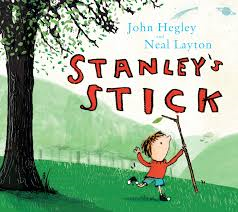 John Hegley, Neal Layton (illus)
John Hegley, Neal Layton (illus)
Hodder Children’s Books
Age 3-7
This enjoyable picture book has a simple message: ‘fantastick’ fun can be had with a stick found in the woods or on the beach. With a little imagination a stick can become a dinosaur, trumpet, fishing rod or rocket. This is an idea which will inspire children’s own imaginative play. Exploring this book is also an opportunity for children to find out more about the natural environment and trees in particular.
Share the story
Read aloud
As you read the story aloud pause to talk about the illustrations and what’s happening; for example think together about where Stanley and his family might be going in the first double page picture or how he feels when he is ‘stickless’. Children will notice other things they want to discuss as well.
Talk more about the story
See if you can remember all the ways Stanley plays with his stick, talk about this together and look through the book to see if you have remembered them all. Which of Stanley’s ideas does your child like best?
Tell the story
After hearing the story a few times, children will get to know it well, especially with the repetition. Encourage them tell it to you in their own words, perhaps using some words or phrases from the story, turning the pages, lifting the flaps and using the pictures to help them.
Lauren writes about fun with Stanley's Stick...
Fun with Stanley’s Stick! Lauren, a parent writes for us
We had a lot of fun sharing Stanley's Stick. Dylan took on the role of Stanley very quickly, first when we were reading the story and then in his play. On finishing the book he immediately wanted to make a fishing rod and began 'fishing' off the bench in the garden. He is very imaginative. The following weekend we re-read the book and went for a walk in some local woods. He enjoyed looking for and choosing sticks and turned them into swords, light sabres and strong magnets that could 'pull people up the hills in the woods'. We also spent some time looking for fairy houses, balancing on logs and throwing sticks into the 'sea' of bluebells. We inevitably had to bring home a 'small' collection for the garden and no doubt they will take on other lives.
I asked Dylan why he likes the book and he said "because the stick can be anything you want it to be like Stanley did". I love the fact that it captures what children do so naturally when they have a chance to just play with simple things and gave us a good reason to get out in the woods -free fun!
Things to make and do
Lauren writes about fun with Stanley's Stick...
Fun with Stanley’s Stick! Lauren, a parent writes for us
We had a lot of fun sharing Stanley's Stick. Dylan took on the role of Stanley very quickly, first when we were reading the story and then in his play. On finishing the book he immediately wanted to make a fishing rod and began 'fishing' off the bench in the garden. He is very imaginative. The following weekend we re-read the book and went for a walk in some local woods. He enjoyed looking for and choosing sticks and turned them into swords, light sabres and strong magnets that could 'pull people up the hills in the woods'. We also spent some time looking for fairy houses, balancing on logs and throwing sticks into the 'sea' of bluebells. We inevitably had to bring home a 'small' collection for the garden and no doubt they will take on other lives.
I asked Dylan why he likes the book and he said "because the stick can be anything you want it to be like Stanley did". I love the fact that it captures what children do so naturally when they have a chance to just play with simple things and gave us a good reason to get out in the woods -free fun!
Draw a picture
Give your child a large piece of paper to draw pictures of Stanley playing with his stick in different ways.
Play the story
See if you can find a stick or sticks like Stanley’s in the park or woods so your child can experiment with some of the ideas in the book or invent some more ways to play with sticks themselves.
Make a photo album
Take photos of your child playing with their stick. You could print the pictures and stick them into a small note book or fold and staple some sheets of paper together – or even sew them down the centre. Your child could tell you about the pictures and you could use what they say to make captions like a photo album. Children will enjoy looking at it and reading it themselves.
Sing a song
Sing songs or rhymes about sticks. You will need two rhythm sticks or two wooden spoons.
Click here for a rhythm stick song you can watch or join in with.
Click here for the words of ‘Tap your Sticks’ sung to the tune of Frere Jacques
Click here for more stick songs
Find out more
Go on a nature walk
Go on a trip together to a wood or park and look at the trees.
Talk about them together; what do children notice?
Draw trees, you could sketch together in the park or woods or at home with crayons or charcoal
Make rubbings of bark using thin paper and thick crayons.
You could press the leaves by placing in tissue in a heavy book
Collect leaves or seeds and make a display – can you find out which tree they come from? Click here for help identifying trees from their leaves.
Find out how to plant a tree here
Click here for more ideas for play with natural objects:
Buy here


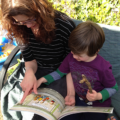
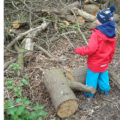
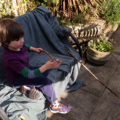
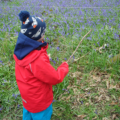
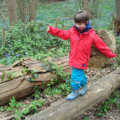
 Follow lovemybooksUK15
Follow lovemybooksUK15